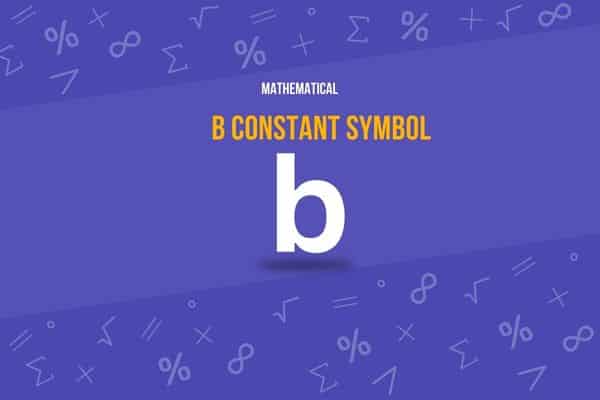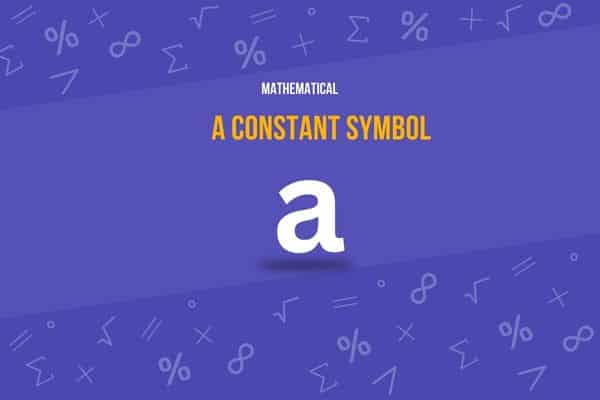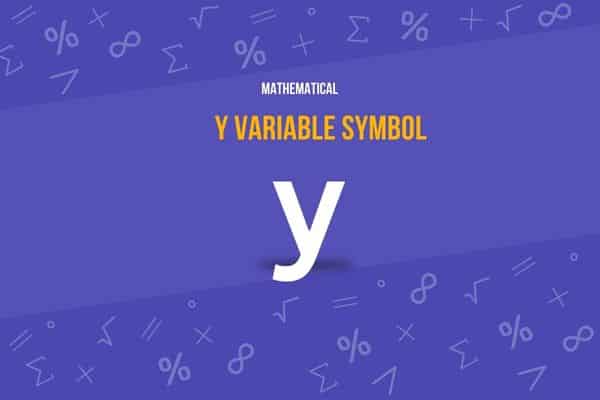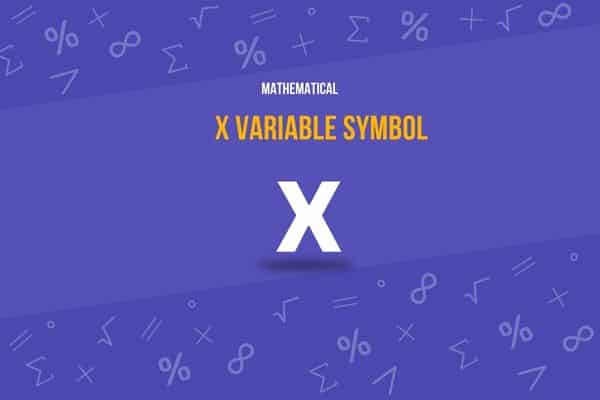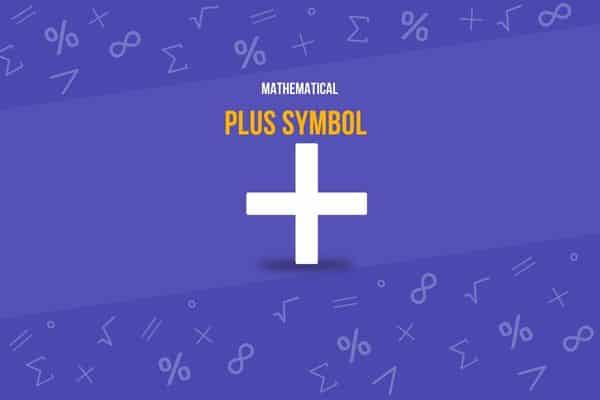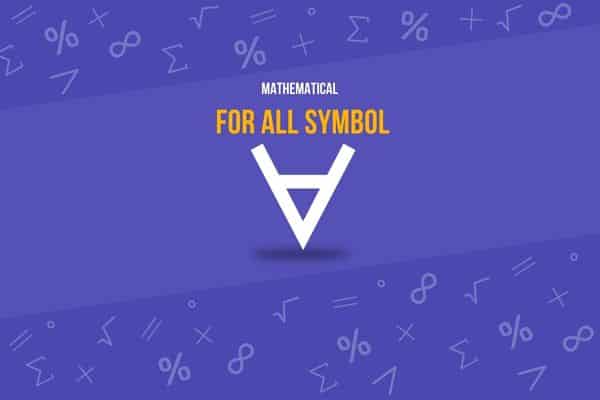What is the Integral Symbol?
You’ve taken the first step on a fascinating journey into the world of calculus with the integral symbol. With its elongated ‘S’ shape, this mathematical symbol might appear a bit mysterious if you’re encountering it for the first time.
Or, maybe you’ve come across it before and found it a bit daunting. We’ve all been there, but fret not!
So, whether you’re a calculus enthusiast, a curious soul, or simply a student looking to understand better, this post is for you. Let’s demystify the integral symbol together, so buckle up and get ready to learn more about this mathematical marvel!
Let’s get started!
Fast Facts
∫
Integral Symbol
Integral Symbol (∫) Overview
Here is a detailed table providing comprehensive information about the Integral Symbol (∫):
| Attribute | Detail |
|---|---|
| Symbol Name | Integral |
| Unicode | U+222B |
| Image | ∫ |
| Brief Description | Used to denote integration in mathematics; symbolizes the integral of a function over an interval. |
| Unicode Version and Date | Unicode 1.1, released in June 1993 |
| Unicode Block Name | Mathematical Operators |
| Plane | Basic Multilingual Plane (BMP) |
| Script | Common |
| Category | Symbol, Math |
| Bidirectional Class | Other Neutral (ON) |
| Combining Class | 0 (Not Reordered) |
| Character is Mirrored | No |
| HTML Entity | ∫ or ∫ or ∫ |
| CSS | \222B |
| UTF-8 Encoding | E2 88 AB |
| UTF-16 Encoding | 22 2B |
| UTF-32 Encoding | 00 00 22 2B |
| ASCII Code | Not applicable (outside ASCII range) |
Here’s What You Will Find

Integral Symbol
The integral symbol, typically an elongated ‘S’, holds a significant place in calculus, a branch of mathematics. Introduced by the mathematician Isaac Newton in the 17th century, the integral symbol signifies the process of integration, which essentially involves calculating the area underneath a curve.
This powerful tool gives us insights into many real-world problems by providing a way to accumulate continuous quantities, like finding distances from speeds or volumes from cross-sectional areas.
Intricately linked with differentiation through the Fundamental Theorem of Calculus, the integral symbol represents an operation that’s both beautiful in theory and practical in application.
Other Names
The integral symbol, which appears ∫ , goes by several names that reflect its various interpretations and uses within mathematics. While it is most commonly referred to simply as the “integral symbol,” it’s also known as the “integral sign“ or “symbol of integration.”
Integral Symbol Meaning
The Integral Symbol (∫) is a fundamental mathematical symbol used to represent integration in calculus. Originating from a long “S,” which stands for “summa,” the Latin word for “sum” or “total,” the symbol was introduced by Gottfried Wilhelm Leibniz in the late 17th century. It means integrating or summing infinitesimal pieces to calculate areas, volumes, and other concepts from accumulating small increments. In mathematical notation, it is used to denote the integral of a function over a specific interval.
This symbol is essential in pure and applied mathematics, playing a critical role in fields such as physics, engineering, and economics, where continuous change and accumulation are foundational concepts.
When it appears in mathematical equations, the integral symbol is often accompanied by a function (for example, f(x)) and the differential of a variable (for example, dx), and it signifies the task of finding the integral or antiderivative of that function concerning the variable.
This could be an indefinite integral, which represents a family of functions, or a definite integral, which calculates the net accumulation of quantities and can be visually interpreted as the area under the curve of a function between two points.
Therefore, while its structure is simple, the integral symbol’s meaning is deep. It encompasses essential concepts in mathematics and offers powerful tools for solving complex problems.
Integral Symbol Unicode
Unicode is a universal character encoding standard that provides a unique number for every character, irrespective of the platform, program, or language. It’s like a grand dictionary for all the symbols used across the globe, ensuring that textual data can be processed, displayed, and understood universally. It’s a crucial tool in our digital world, used in everything from email communication to website development to programming languages.
As for the integral symbol, its Unicode character is U+222B. This means that in the vast library of Unicode characters, from the thousands of alphabets, symbols, and emojis we use every day, the integral symbol holds its unique place at the number 8,683 (222B in hexadecimal), waiting to be called upon when equations of calculus are to be written or solved. It’s a small but critical detail, enabling the integral symbol to be seamlessly used and recognized in digital formats worldwide.
Integral Symbol Uses
The integral symbol is central to calculus, embodying the mathematical integration process. It’s used to find the total or sum of infinitesimal quantities, like areas under a curve, volumes under a surface, or accumulations over time.
The Integral Symbol (∫) is a cornerstone of calculus and has a broad range of applications across various disciplines. Understanding its uses highlights the versatility and fundamental importance of integration in scientific and mathematical problem-solving. Here are some key uses of the integral symbol:
Area Under a Curve
- Calculating the area between a curve represented by a function and the x-axis over a given interval. This is fundamental in physics and engineering for determining distances traveled over time, among other applications.
Volume Calculation
- Used in calculating the volume of solids of revolution. By integrating a function around an axis, one can determine the volume of a three-dimensional object generated by rotating a two-dimensional shape.
Physics
- Determining displacement when given a velocity function over time.
- Calculating work done when a force is applied over a distance, especially when the force is not constant.
- Evaluating electric charge distribution by integrating charge density over a volume.
Probability and Statistics
- Finding probabilities for continuous random variables by integrating their probability density functions over specified intervals.
- Calculating expected values, variances, and other statistical measures in probability distributions.
Economics
- Integrating cost functions to find total cost over a range of output levels.
- Analyzing consumer and producer surplus in market models to evaluate economic welfare.
Engineering
- Application in thermodynamics for calculating the total heat transfer in a changing temperature environment.
- Designing control systems where integral calculus helps in determining system stability and performance.
Biology and Medicine
- Modeling population dynamics over time through differential equations that involve integrals.
- Analyzing the area under a curve in pharmacokinetics to determine the total drug exposure over time (Area Under the Curve, AUC).
Environmental Science
- Calculating total pollutant load in an ecosystem by integrating the rate of pollutant discharge over time.
- Estimating total energy received by the earth from solar radiation by integrating the radiation function over time.
These examples showcase the integral symbol’s critical role in both theoretical frameworks and practical applications, making it an indispensable tool in the toolkit of scientists, engineers, economists, and many other professionals.
Engineers, physicists, and mathematicians use it to describe the cumulative effect of continuously varying forces or to calculate probabilities in statistics.
In economics, it helps model consumer and producer surpluses or to find the present value of continuous income streams. From analyzing waveforms in signal processing to calculating the center of mass in physics, the uses of the integral symbol span diverse scientific disciplines. It’s a cornerstone in our understanding and depiction of the continuous aspects of the world around us.
Integral Symbol Examples
The Integral Symbol (∫) is a versatile tool in mathematics, frequently used to solve a variety of practical and theoretical problems. Here are a few examples that illustrate the diverse applications of this symbol in different contexts:
Basic Integral Calculation
Example 1: Calculate the area under the curve of (f(x) = x^2) from (x = 0) to (x = 3). This involves computing the definite integral (\int_0^3 x^2 \, dx), which evaluates to (9), representing the total area under the curve over the specified interval.
Example 2: Determine the antiderivative of (g(x) = \sin(x)). The integral, (\int \sin(x) \, dx), results in (-\cos(x) + C), where (C) is the constant of integration.
Physics Application
Calculating Work: If a force (F(x) = 10x) Newtons is applied over a distance from (x = 0) to (x = 5) meters, the work done can be calculated by the integral (\int_0^5 10x \, dx), which equals (125) Joules. This example shows how integrals account for varying forces over distances.
Economics Analysis
Consumer Surplus: Suppose the demand function for a product is given by (D(p) = 100 – 2p) and the market price is (20). The consumer surplus, which is the area above the price level and below the demand curve up to the price intercept, can be calculated using the integral (\int_{20}^{50} (100 – 2p) \, dp).
Biological Modeling
Population Growth: In a model where a population’s growth rate is proportional to its size, (P'(t) = kP(t)), the total population over time can be determined by solving the integral of the growth rate function, reflecting cumulative changes in population size.
These examples underscore the integral symbol’s crucial role in simplifying and solving problems that involve accumulation or continuous change across various fields of study. Whether it’s calculating areas, evaluating total change, or solving differential equations, the integral symbol is indispensable in mathematics and its applications.
Let’s consider one of the most basic uses of the integral symbol, which is calculating the area under a curve. Suppose we have a function, f(x) = x^2. If we want to find the area under this curve from x = 0 to x = 2, we will use the integral symbol to set up the problem like this: ∫ from 0 to 2 of x^2 dx.
In this notation, the integral symbol ∫ starts the expression, indicating we’re performing an integration. The ‘dx’ at the end represents a tiny increment in x, and the x^2 is the function we’re integrating.
The 0 and 2 are our lower and upper limits of integration.
Why is the Integral Symbol Important?
The integral symbol is fundamentally important in mathematics and its various applications. It represents the concept of integration, a core operation in calculus, without which many mathematical ideas and physical phenomena would be difficult, if not impossible, to express and understand. The integral symbol allows us to compute continuous quantities, such as areas under curves, volumes, and accumulations, ubiquitous in fields like physics, engineering, economics, and computer science.
Moreover, it connects with the process of differentiation through the Fundamental Theorem of Calculus, providing a profound link that illuminates many aspects of the mathematical universe. Without the integral symbol and the concept it encapsulates, our ability to describe and make sense of the world would greatly diminish.
Integral Symbol History
The history of the integral symbol (∫) is a fascinating reflection of the development of mathematical thought and notation. Its inception can be traced back to the 17th century when calculus was being formalized by two of history’s greatest mathematicians, Sir Isaac Newton and Gottfried Wilhelm Leibniz. While both contributed fundamentally to calculus, it was Leibniz who introduced the integral symbol in 1675.
Did You Know?
Leibniz chose the elongated “S” to represent the integral, meaning “summa,” the Latin word for “sum,” which is appropriate given that integration is fundamentally about summing infinitesimal parts.
This was a major advance in mathematical notation, not merely for its utility in solving problems involving areas and volumes but also because it facilitated the formal development of the calculus methods used today.
Over the centuries, the notation has been refined but the basic symbol introduced by Leibniz remains largely unchanged. It has been standardized in mathematical texts and is universally recognized in educational and professional contexts. The integral symbol has also become a cultural icon of sorts, often representing the field of calculus itself within popular culture.
The enduring nature of the integral symbol (∫) demonstrates its importance and utility. It not only simplified the expression of mathematical ideas but also enabled a more profound understanding and application of calculus in multiple scientific fields, from physics to engineering to economics, profoundly impacting technological and scientific progress.
Integral Symbol Origin
The origin of the Integral Symbol (∫) is deeply rooted in the history of mathematics, particularly within the branch of calculus. This symbol was first introduced by Gottfried Wilhelm Leibniz, one of the principal developers of calculus, in the late 17th century. Leibniz chose the symbol ∫ as an elongated “S” to represent “summa,” the Latin word for “sum” or “total.” His choice reflected the fundamental concept of integration, which involves summing an infinite number of infinitesimals to calculate areas, volumes, and other quantities.
The adoption of the integral symbol marked a significant evolution in mathematical notation, providing a concise and elegant way to express the accumulation of quantities over an interval. Before Leibniz’s introduction of ∫, mathematicians struggled with cumbersome notations and verbal descriptions to explain the concept of integration. The new symbol facilitated clearer communication of ideas and more streamlined calculations.
The integral symbol’s introduction by Leibniz was part of a broader movement towards the development of symbolic language in mathematics, which greatly enhanced the discipline’s clarity and efficiency.
As mathematical notation continued to evolve, the integral symbol became universally recognized and adopted in mathematical texts worldwide, symbolizing one of the fundamental operations in calculus and analysis. Today, it stands as a pivotal element of mathematical notation, essential in education and professional use alike.
Evolution of the Integral Symbol
Since its inception by Gottfried Wilhelm Leibniz in the 17th century, the integral symbol has largely remained consistent in its appearance and meaning. Its design as an elongated ‘S’ was a clever nod to its purpose, symbolizing the sum of an infinite number of infinitesimal parts, inspired by the Latin word “summa”.
While integration applications have greatly expanded and become more sophisticated, the symbol itself has remained constant, elegantly simple, yet powerfully expressive. However, the way we write and display it has evolved with technology.
From manuscripts to print and now to digital formats, the integral symbol has adapted to our changing means of communication while maintaining its iconic shape and fundamental meaning in the mathematical lexicon.
Integral Symbol In Everyday Life
The integral symbol symbolizes more than a mathematical operation; it embodies a profound life principle – seeing the whole by understanding its constituent parts. This idea resonates deeply in daily life.
For example, when faced with a large task, it can be helpful to apply the principle behind integration, breaking the task into smaller, manageable parts and tackling each one sequentially. Just as the integral sums up infinitesimal parts to understand the whole, we can approach our challenges incrementally, one step at a time.
Last Thoughts
As we’ve explored, the integral symbol isn’t just an abstract mathematical notion; it’s a fundamental concept that has resonated through centuries of scientific thought and even permeated popular culture. Its historical significance, varied applications, and influence extend beyond the mathematical world.
As you look further into the world of symbols and signs, you’ll find that each holds its unique story, just like the integral symbol. If you’re fascinated by the integral symbol, why not consider expressing that appreciation daily?
By exploring further, you’re not just learning about signs and symbols – you’re connecting with the rich tapestry of knowledge and culture they represent.
Before You Go
Don’t stop here! Continue your journey into the fascinating world of symbols, each a key opening doors to understanding diverse areas of knowledge, history, and culture.
If you found our exploration of the integral symbol (∫) insightful and useful, why not share this knowledge with others who might appreciate its depth and versatility?
Whether they’re students grappling with calculus, professionals in fields where mathematics is crucial, or just enthusiasts who love to see how math applies in the real world, this post has something to offer.
Sharing this could help illuminate complex concepts or even spark a passion for mathematics in someone new. Spread the word and help others discover the fascinating applications of the integral symbol!


